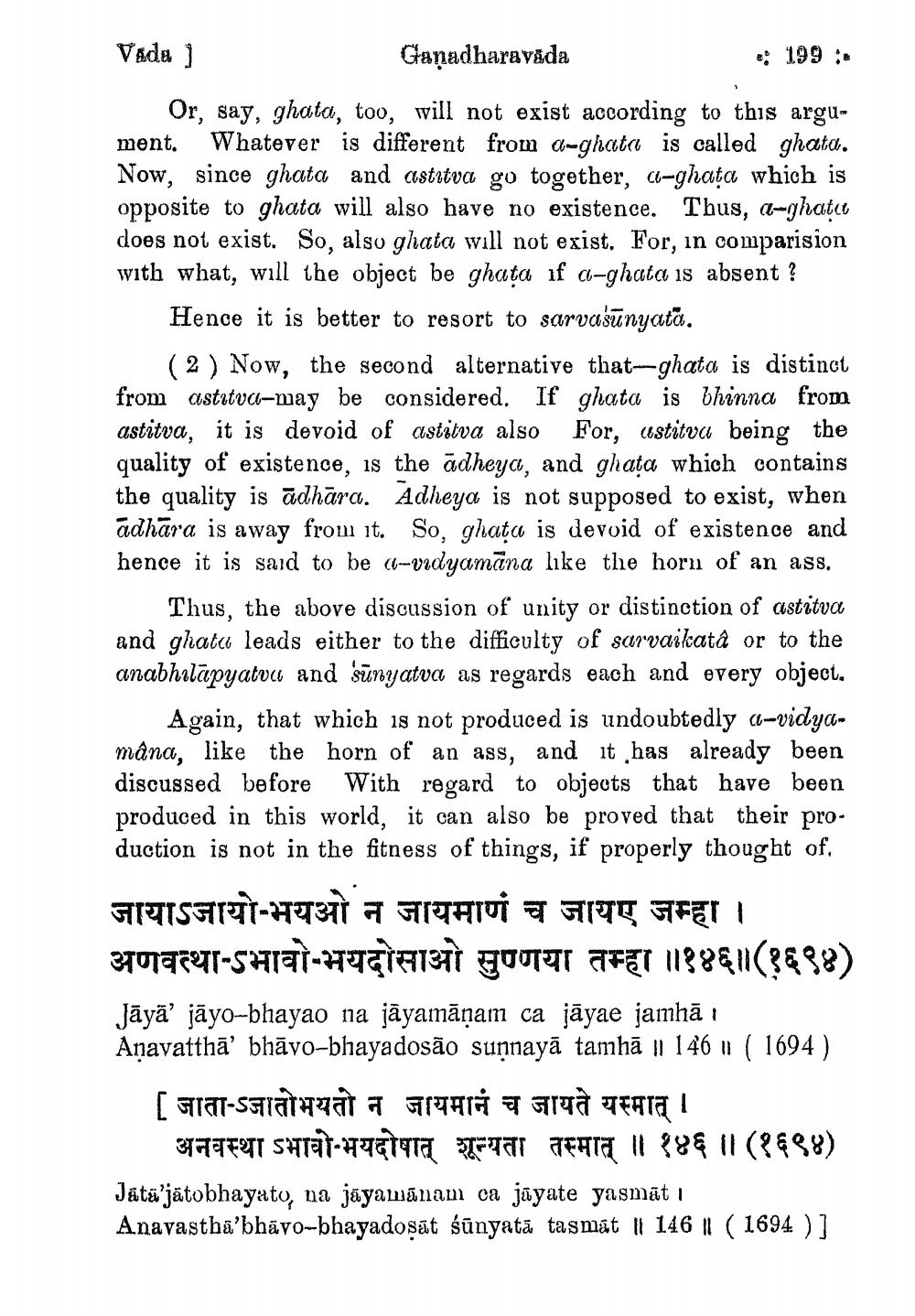________________
Vada ]
Ganadharavida
: 199:
Or, say, ghata, too, will not exist according to this argument. Whatever is different from a-ghata is called ghata. Now, since ghata and astitva go together, c-ghata which is opposite to ghata will also have no existence. Thus, a-ghatu does not exist. So, also ghata will not exist. For, in comparision with what, will the object be ghata if c-ghata is absent ?
Hence it is better to resort to sarvašūnyata.
(2) Now, the second alternative that-ghata is distinct from astutva-may be considered. If ghata is bhinna from astitva, it is devoid of astitva also For, ustitva being the quality of existence, is the adheya, and ghata which contains the quality is ādhāra. Adheya is not supposed to exist, when ādhāra is away from it. So, ghata is devoid of existence and hence it is said to be c-vidyamāna like the horn of an ass.
Thus, the above discussion of unity or distinction of astitva and ghatu leads either to the difficulty of sarvaikatâ or to the anabhılāpyatvu and sūnyatva as regards each and every object.
Again, that which is not produced is undoubtedly c-vidyamâna, like the horn of an ass, and it has already been discussed before With regard to objects that have been produced in this world, it can also be proved that their production is not in the fitness of things, if properly thought of. जायाऽजायो-भयो न जायमाणं च जायए जम्हा । अणवत्था-ऽभावो-भयदोसाओ सुण्णया तम्हा ॥१४६॥(१६९४) Jāyā’ jāyo-bhayao na jāyamānam ca jāyae jamhā i Anavatthā' bhāvo-bhayadosão suņnayā tamhā 11 146 11 ( 1694 ) [ FIar-sgratinat a FTTHAT FIT TA1a1
अनवस्था ऽभावो-भयदोषात् शून्यता तस्मात् ॥ १४६ ।। (१६९४) Jatü’játobhayato, na jāyamanam ca jayate yasmāti Anavastha'bhāvo-bhayadoşāt šūnyatā tasmat || 146 # ( 1694 ) ]




